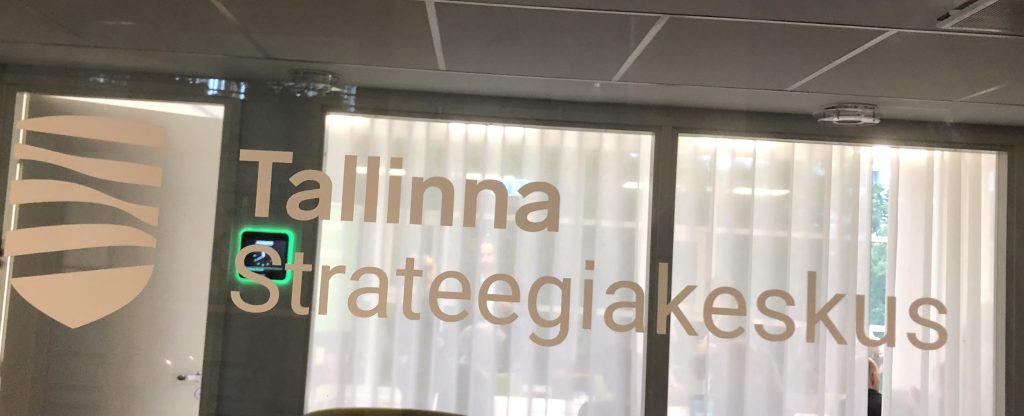After meeting at Vabaduse väljak, which translates to freedom square, we headed to the Strategic Managmeent Office of the City of Tallinn. There we met Mats and Triin who greeted us with warm coffee during a rainy morning. Matts is responsible for the implementation of strategy, whereas Triin is in charge of the implementation of the Smart City Strategy. Their goal is to break up silo-thinking and encourage ministries to work more closely together.

To gain further insight into their work, they presented us “Tallinn 2035”, which is the development strategy of the city. The six strategy goals were explained in detail with all of their sub objectives. They consist of 1) Friendly urban space, 2) Creative Global City, 3) Healthy Moblitiy, 4) Green Transformation, 5) Kind Community, 6) Home that includes the street. Overall, one of the main principle to achieve these goals seems to be the participation and cooperation of citizens. To elaborate, they gave many examples of implemented projects and their outcomes. To conclude, the Strategic Office develops strategies by linking the financial and spatial resources as well as the different departments and stakeholders.
As a second part of the morning programme Triin focused on the idea of a Smart City and the goals and projects of Tallinn. To summarise, a Smart City includes data-based managmeent, smart governance (involving citizens, research institution, civil society and organisations), smart solutions (digital, green, high and low tech) as well as a circular economy. However, she mentioned that Tallinn is not the role model just yet. They have a lot of data but have not found the most efficient solutions for the usage. To underline, Triin showed us several projects to emphasise Tallinns’ innovation, international and regional cooperation and the participation of the population.

In the afternoon we were welcomed by Kersten and Johanna in the Riigikantselei, which is situated in the joint building of ministries. They currently form the Estonian Public Sector Innovation Team with four other Team members. The goal of the Innovation Team is to find and apply new approaches in a participatory way and consult different branches of the public sector. Kersten and Johanna are confronted with tasks such as Design thinking, behavioral insights as well as experimenting.
The innovation team forms a contact point for the ministries of the Estonian Government. When public institutions face issues they have the opportunity to seek the in house Innovation Team to find solutions in a participative bottom up process. In order to respond to the many enquires the Innovation Team faces it scales up their small team through training so called Sherpas. Sherpas are individually mentored by the Innovation Team in order to lead their team through a process of change.
Furthermore, Kersten and Johanna stress how important it is to test a program, as it not only makes it more effective but also helps to be more cost-efficient. It’s important to take a step back and take the point of view of an anthropologist during the fieldwork. In conclusion, the Innovation Team shared their lessons learnt. One of them is how they may create the tools to solve an issue but they don’t have the ownership of the programs. The ownership lies in the hand of the ministries or teams seeking support by the Innovation Team.
The take home message after the third day of our study trip is the value of participatory processes in the public sector.